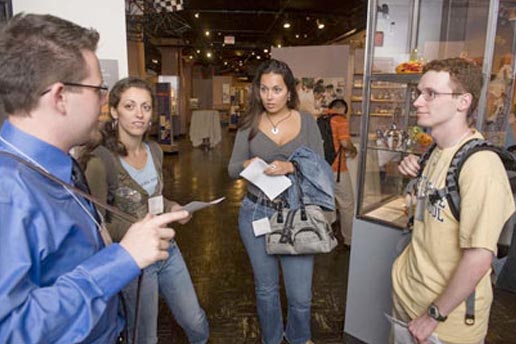
In late August, the MIT Energy Initiative (MITEI) announced the first class of MIT Energy Fellows. Sponsored by the industry partners in the Initiative, 39 graduate students are the inaugural members of the Society of Energy Fellows at MIT, an organization within MITEI established to foster a network of students dedicated to meeting the world’s future energy needs.
Professor Ernest J. Moniz, director of MITEI, notes, “We are excited about this outstanding group of energy fellows—the next generation of energy innovators, scientists, engineers, policy leaders, and entrepreneurs who will help transform our global energy systems.”
The first group of Energy Fellows is very diverse. Its 13 women and 26 men range in age from 21 to 50 years. Twenty of the fellows hail from at least 11 different states in the U.S. Because energy issues are global in nature, developing the fundamental science, technologies, and strategies to build a sustainable energy future will require worldwide adaptation and cooperation. Accordingly, in the first class of MIT Energy Fellows, 19 individuals come to MIT from 14 countries outside the United States, namely Belgium, Bulgaria, Canada, China, Croatia, Germany, Hong Kong, India, Italy, Mexico, Russia, Spain, Ukraine, and Yugoslavia.
The MIT Energy Fellows program is designed to attract and support graduate students with a special interest in energy, to build MIT’s research capacity, and to foster a robust community of faculty, students, and staff engaged in energy research, education, and campus activity. Current MITEI members have a five-year commitment to the fellowship program and will support nearly 200 graduate students in energy over the course of their initial membership agreements.
MITEI assigns the fellowships to academic units with input from the supporting members. The MIT department and division heads then select the “named” fellows, for example, the Eni-MIT Energy Fellows. Fellows are encouraged to become acquainted with their sponsoring organizations—leading energy firms that are engaged with MITEI. Visiting scholar Dr. Nicola De Blasio, representative of MITEI Founding Member Eni, says that his company “is proud to support the next generation of innovators and leaders in the energy field. The Energy Fellows program is an important part of Eni’s research partnership with MIT.” This year, 11 Founding, Sustaining, and Associate members of MITEI are sponsoring fellows.
Professor Robert C. Armstrong, deputy director of the Energy Initiative, praised the support of MITEI’s industry partners. “We deeply appreciate the commitment of MITEI members to energy education at the Institute,” he says. “Their support represents a major investment in the world’s intellectual infrastructure, and will help enable a cleaner, more affordable, and more sustainable energy future.”
The MIT Energy Fellows have far-ranging interests. Fellows have been assigned to all five schools at MIT, across 18 departments and divisions. Many are engaged in traditional energy fields such as engineering, chemistry, and materials science; others are pursuing studies in energy economics and business, energy policy and politics, and the energy implications of urban planning and architecture. Although most of the new fellows are incoming first-year doctoral students, a handful are in their second or third years, depending on the specific needs and requirements of their schools and departments.
During a reception at the MIT Museum in late August, the new fellows were welcomed by MITEI and MIT leadership, MIT faculty, and MITEI members. The Society of Energy Fellows was formally launched in September at an all-day symposium opened by MIT President Susan Hockfield. The symposium showcased MIT energy faculty research as well as the work of MITEI sponsors in the energy arena.
Dr. Amanda Graham, director of MITEI’s Education Office, is the Initiative’s coordinator for the Society of Energy Fellows. “I am looking forward to an exciting year of working with this outstanding group of graduate students,” Graham says. “We want to facilitate relationships among the students, the faculty, and their industry sponsors to show them a range of opportunities in the energy arena. We hope that the society will provide the students with a sense of community and enrich their experience at MIT.”
This article appears in the Autumn 2008 issue of Energy Futures.